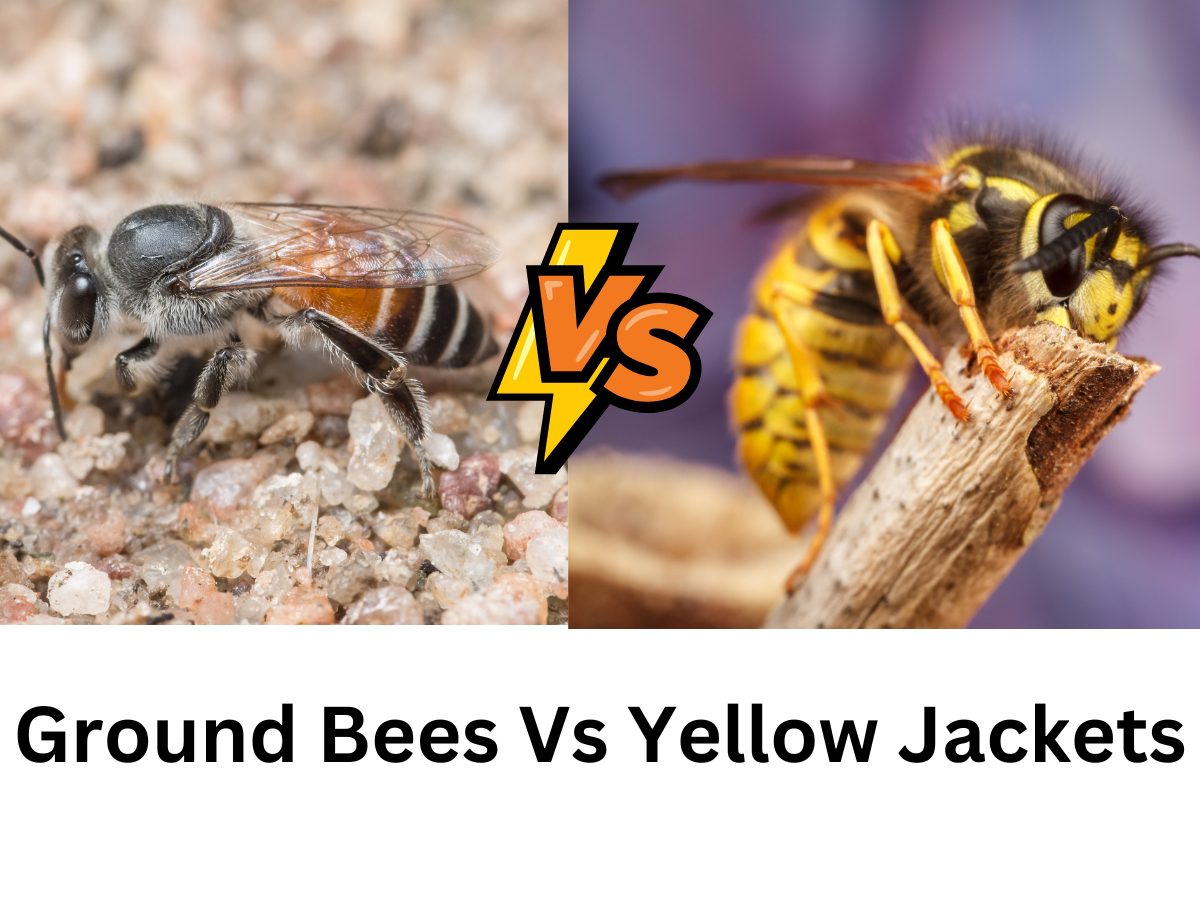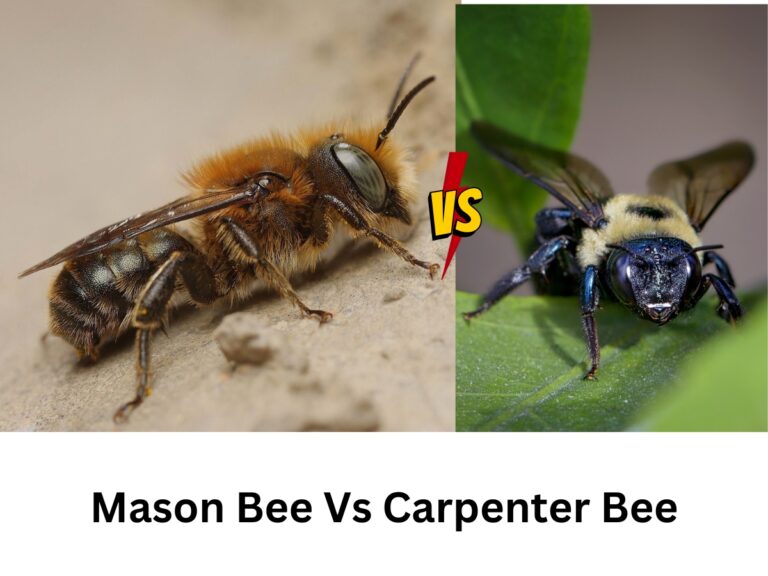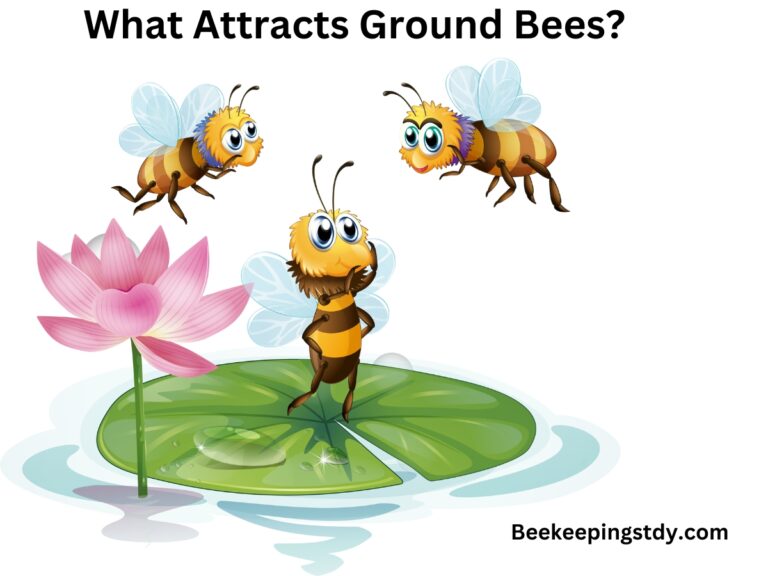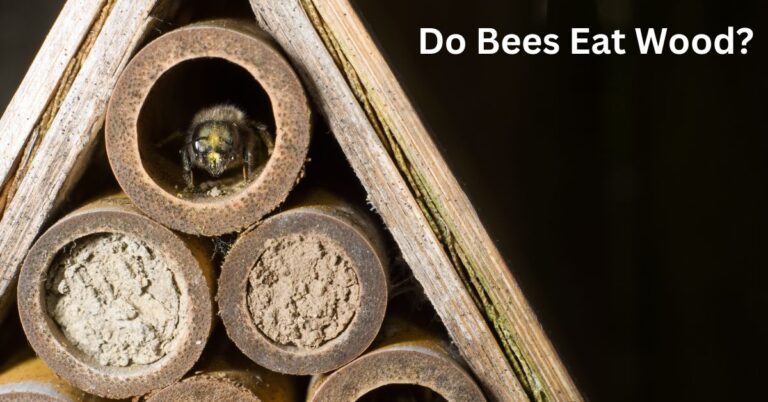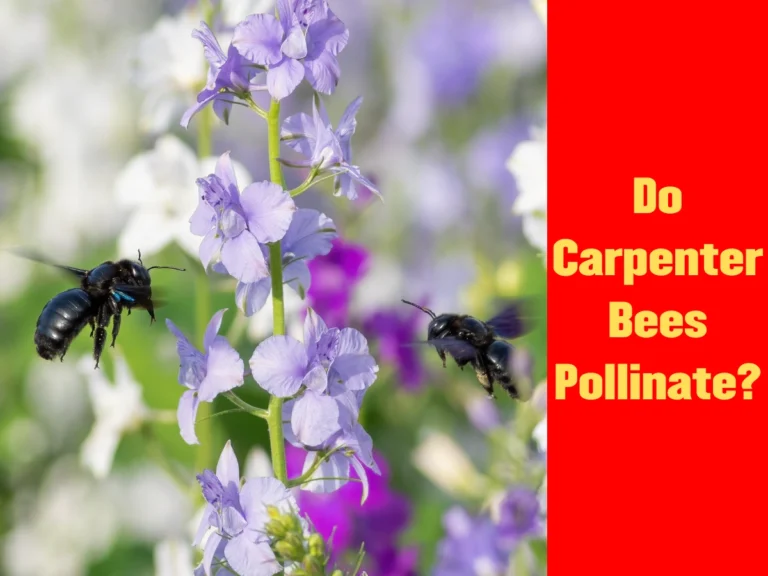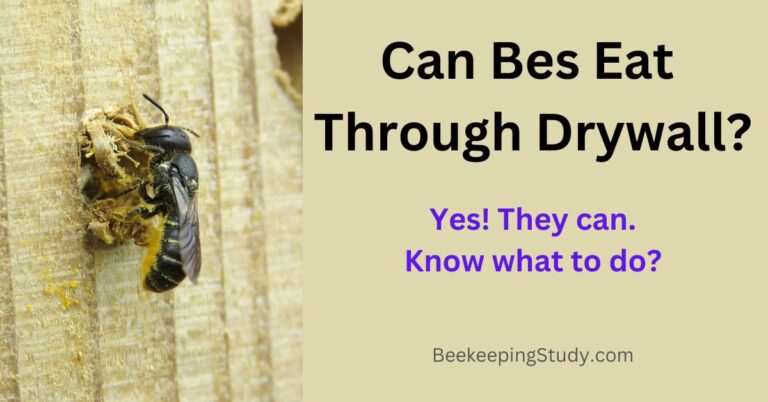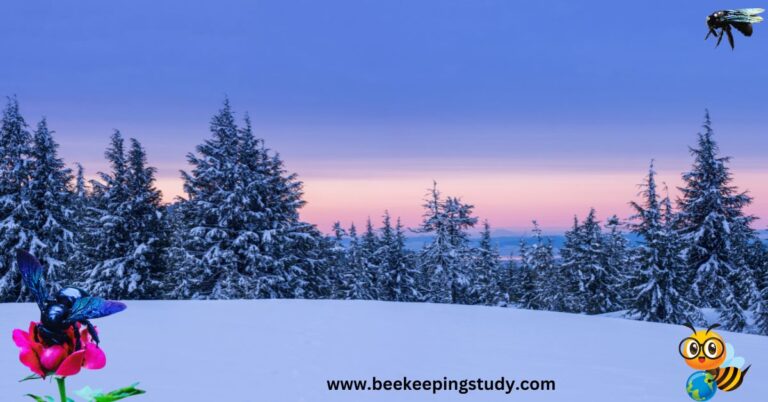Revealing The Conflict: Ground Bees vs Yellow Jackets
There is a conflict in people’s minds about ground bees vs yellow jackets. Some people are confused about identifying ground bees or yellow jackets. They can’t tell the difference between these 2 creatures.
Though yellow jackets and ground bees both have some sort of similarities in look. But actually, there is a lot of difference between them.
Not only do they have differences in look but also they have a lot of differences in their instinct. Pollination behavior, aggressiveness, food habits, and plenty of other differences are there between yellow jackets and ground bees.
That’s what I am going to discuss with you in this post. Also, I will discuss which one is helpful and which one is harmful to us. So, stick with the content. Your all confusion about spotting the differences between yellow jackets and ground bees will be clear.
What Is Ground Bees?
Ground bees are usually less than 3/4th of an inch in size. They named so because of their ground nesting behavior. They are different in size and color including red, blue, black, yellow, and so many more.
Most of the Ground bees are solitary in nature. They usually don’t live in a colony. They don’t have any queen or democratic system. But some ground bees also led colonial life.
Most of the ground bees also contribute to pollination. They are not too aggressive. Some female ground bees have the capability to sting their enemies repeatedly. But they use sting very rarely.
What Is Yellow Jackets
Yellow jackets are a special type of wasp that has a yellow and black body color. Some of the yellow jackets also are white and black in body color. All female yellow jackets have the capability of stinging more than once.
Yellow jackets are also social creatures like honey bees. They live in a colony having workers, queens, and drones.
Their queen is up to 3/4th of an inch in length and workers are usually up to half an inch. The queen in late spring swarm alone to build a nest in a suitable nest site.
She lays eggs and raises broods on her own. When small worker bees are raised a new colony is built. After that worker bees take care of all the future larvae and pupae. Every spring Queen Yellow Jackets left the old colony to build a new colony.
They have very strong mandibles. Using the small mandibles yellow jackets can eat the following.
- Small insects like ants
- Nectar
- Fruit juices
- Tree sap, etc.
Sometimes people become confused between yellow jackets and honey bees. This Wikipedia post might help you to learn more details about yellow jackets.
Why Are Yellow Jackets So Aggressive?
Unlike ground bees, all yellow jackets are social in nature. They are very aggressive about protecting their colony. When they found any danger alarming it became worse for the enemy.
They will attack the enemy and will sting multiple times. In fact, if you don’t interrupt them but they think you are an enemy they will start chasing you.
Their excessive protective nature makes them very aggressive in nature. So, it is always better to avoid the area having a yellow jacket nest.
Comparison Of Ground Bees VS Yellow Jackets
There are a lot of differences and similarities between ground bees and yellow jackets.
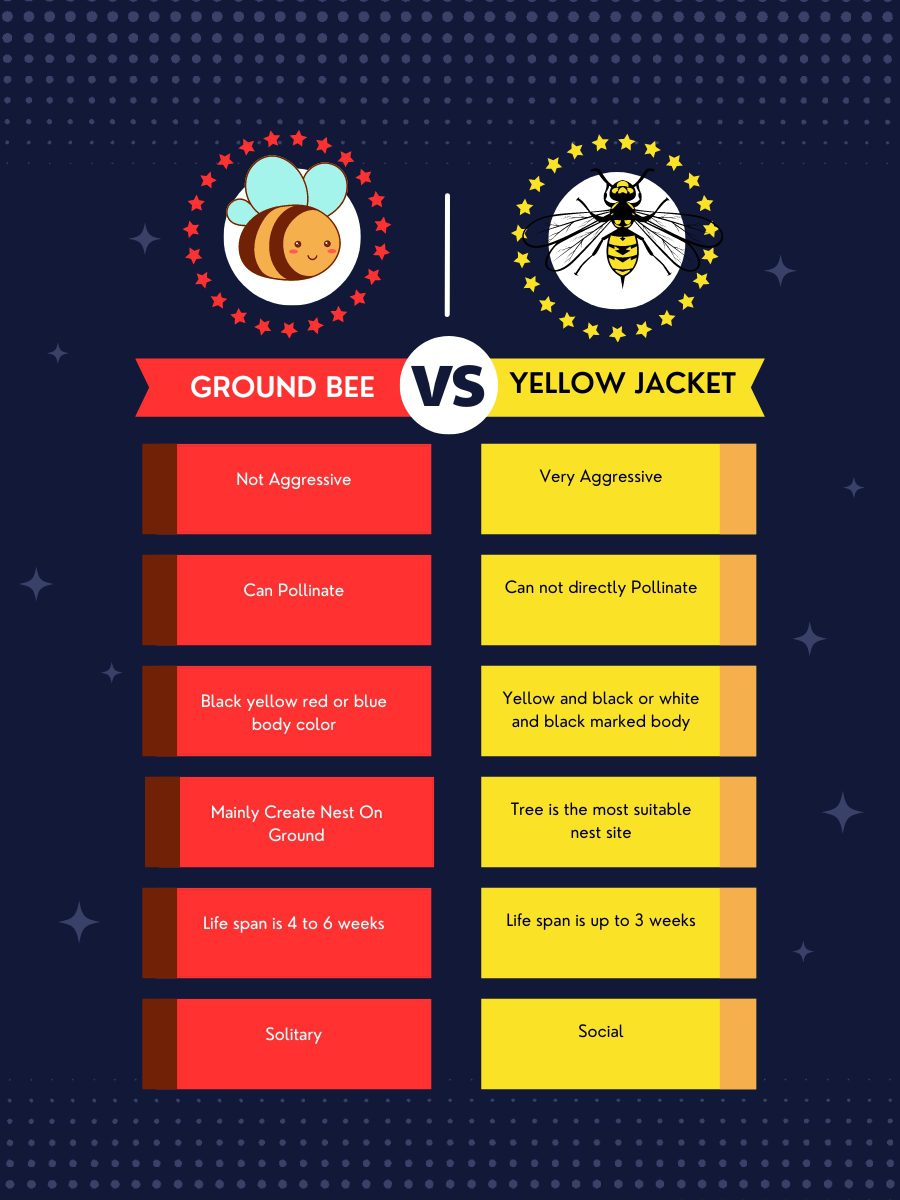
A comparison between these 2 creatures is shown in the following table.
| Characteristics | Ground Bee | Yellow Jackets |
| Size | Less than 0.75 Inches. Usually around 0.5 inches. | The queen size is up to 0.75 inches. Worker size is less than 0.5 inches. |
| Pollen basket | Ground Bees Have Pollen Basket. | Yellow jackets don’t have any pollen baskets. |
| Pollination | Most of the ground bees are pollinators. There are some non-pollinating ground bees too. | Yellow jackets are less likely to pollinate in nature as they don’t have pollen baskets. |
| Instinct | Most of the ground bees are solitary in nature. | All yellow jackets are social in nature. |
| Nest site | Mainly live in the ground. Some of the ground bees also make nests in wood. | Create their nest in trees, soil cavities, house walls, and other protective locations. |
| Body Color | Black, yellow, red, or blue body color. | Black and yellow bodies. Sometimes white and black bodies. |
| Body hair | They have dense hairy bodies. | They have very little dense body hair. |
| Food habit | Used to eat ground-living small insects, pollen, tree sap, etc. | They eat small ground living or flying insects, fruits, flower nectar, etc. |
| Aggressiveness | Ground bees are very less aggressive. Female ground bees can rarely sting. | Yellow jackets are very aggressive. They sting their enemy multiple times at once. |
| Life span | Usually 4 to 6 weeks. | Usually 2 to 3 weeks. |
| Venom | Their sting is usually less poisonous. | Comparatively more poisonous stings. |
These are the most common characteristics of ground bees and yellow jackets.
But still, people get confused about identifying whether it is ground bees or yellow jackets.
How To Tell Is It A Bee Or Yellow Jacket?
You can easily spot the difference between a bee and a yellow jacket. Just closely look at the creature and follow the instructions below.
- First of all, if you see the body is less dense hairy and it has a yellow and black or white and black marking on its body. This means it is a yellow jacket. Otherwise, it’s a bee.
- If the creature starts chasing you without your disturbance then it could be yellow jackets. Remember male ground bees also start chasing people to drive fear. But they are unable to sting people.
- If you got multiple time stings by the creature then this is obviously a yellow jacket.
Remember bees won’t sting you unless you interrupt them. But yellow jackets can sting you without any interruption. Also, bees fly with pollen in their pollen basket. But yellow jackets don’t have any pollen baskets.
Frequently Asked Questions About Ground Bees VS Yellow Jackets
What is the most aggressive ground bee?
Among all of the ground bees, Africanized honey bees are the most aggressive ground-nesting bees. Their sting is very painful. But they can sting you only once and then die.
Do yellow jackets have venom?
Yes, yellow jackets have strong venom that causes too much pain after getting stung. Their venom can cause allergic reactions and blood infections too.
Are yellow jackets harmful?
If you can keep yourself far from yellow jackets they won't be harmful for you. But in case yellow jackets treat you as a threat it will sting you continuously. Their venom is very poisonous. If you are allergic to yellow jacket sting then it could be more worse for you.
Should I get rid of Ground bees?
Ground bees are not harmful. So, if it is not making any problem for you then you should not need to get rid of them. Usually, they will leave your place on their own within 4 to 6 weeks. They are also beneficial for our nature. So, try to leave them alone. It would be good for you and them.
Finally, Yellow Jackets VS Ground Bees Which One Is Good For Our Nature?
Remember every creature has benefits for our environment. Yellow jackets and ground bees also help to keep balancing our ecosystem.
Benefits Of Yellow Jackets
The following are the ecological benefits of yellow jackets.
- Predators: Yellow jackets helps us to control pest and harmful insects by eating them. They can eat small insects like arthropods, ants, spiders, etc.
- Food source: For some other helpful animals yellow jackets provide a food source for them. Birds, reptiles, frogs, and other animals might prey on yellow jackets for protein content.
- Pollination: Yellow jackets indirectly help sometimes in pollination. While they collect nectar from different plants.
- Ecological Balancing: Eating pests, providing food sources to other animals, and eating waste like fallen fruits yellow jackets are contributing to ecological balancing.
Benefits Of Ground Bees
Following are the benefits of having ground bees for our nature.
- Pollination: Almost 80% of the bee species are ground nesting. So, they contribute in a huge portion to worldwide pollination.
- Seasonal Fruits: Some of the seasonal fruits like strawberries strongly depend on pollination by ground bees.
- Harmless: Male ground bees don’t have any stings and female ground bees very rarely use their stings. This is why ground bees are often considered harmless.
- Provide Food Source To Predators: Ground nesting bees are rich in protein. This is why predator animals like woodpeckers, raccoons, bears, frogs, Reptiles, bats, and giant lizards prey on ground bees.
There are countless benefits of ground bees for our nature. They are contributing a lot to help keep balancing our ecosystem.
Though both ground bees and yellow jackets have benefits for our ecosystem. But yellow jackets are very aggressive in nature. On the other hand ground bees are pollinators and harmless. This justifies that ground bees are more beneficial than yellow jackets for our nature.

